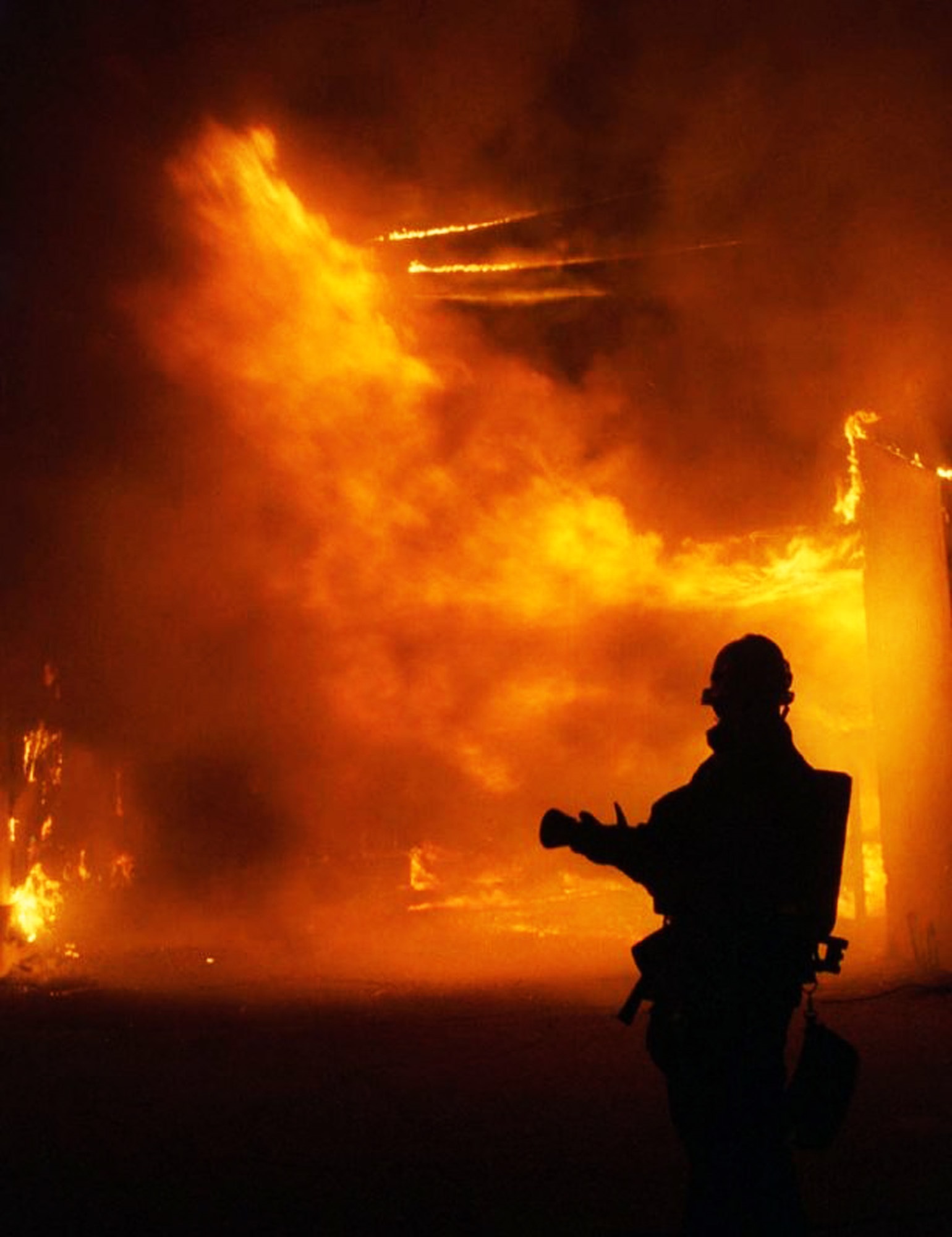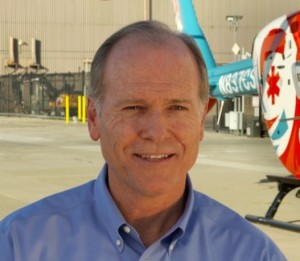Light A Fire
Tom Pandola and Jim Bird’s new book Light a Fire Under Your Business is unlike most business books you will read. The authors not only share practical business principles, but they do it through a combination of business and fire-fighting experience. Whether fighting a fire in a building or one ranging outside, these two veteran firefighters share their experiences and apply the principles in a clever way that gets your attention. Firefighting requires teamwork, flawless execution and commitment.
I recently had the opportunity to talk with Tom about the book and his advice to build a culture and a team. Tom Pandola is a director of communications in the air medical transportation industry. He is also a cofounder of Third Alarm, a leadership consulting company. Pandola’s work experience includes 25 years with the Los Angeles City Fire Department where, as a fire captain and battalion chief, he tested inspirational leadership principles while solving problems associated with responding to fires, floods, riots, and earthquakes.
Build a Culture of Execution
How do you develop a culture of execution?
When something is happening, or not happening and falling short of the organization’s expectations, in this case execution, I have three steps that I take to zero-in on the cause of the problem.
Step one: I look at the process that is already in place. Does it provide our workforce with all that they need to execute properly and in a timely manner? If not, I would look at either developing a new process or just adjusting the current one to be more supportive of those involved.
Step two: If a lack of execution is not found to be a process issue, then I will look at the individuals involved. Do they feel as though they are empowered and authorized to take the appropriate actions? Sometimes there has been a lack of communications or a miscommunication that causes people to feel less than accountable. I would correct whatever the issue that is found to be causing the lack of execution. This would include the last resort, which is to discipline individuals if it turns out they have made a conscious decision not to follow the process or to not take actions that they are authorized to take.
Step three: This step gets to the core question about developing a culture of execution. When leadership continuously engages in process improvement and personnel empowerment, they are working on the culture of the organization. I believe that it takes leaders coming together to define the things that they believe will improve execution – and then work at infusing the desired behaviors into the culture.
 An example from the fire service is the need to provide every member of the department with the right process and feeling of empowerment to get the right things done, for the right reasons, and at the right time. This is necessary because the fire service is a 24/7/365 operation, and the top leaders cannot be present when most of the work of their department is taking place. So in order to give the “right things” meaning, the leadership developed meaningful mission, vision, and values statements that serve to drive decision making at all levels of the organization.
An example from the fire service is the need to provide every member of the department with the right process and feeling of empowerment to get the right things done, for the right reasons, and at the right time. This is necessary because the fire service is a 24/7/365 operation, and the top leaders cannot be present when most of the work of their department is taking place. So in order to give the “right things” meaning, the leadership developed meaningful mission, vision, and values statements that serve to drive decision making at all levels of the organization.
This is the first step I recommend every organization take. Bring the leadership together and write a meaningful mission statement that defines, in the simplest way, your organization’s core purpose. This will provide your workforce with the basis for their thoughts and actions. Then write a vision statement that illustrates a desired future. This provides each individual the knowledge of executing their duties in a way that contributes to that vision. And finally, each work team should develop a set of values that they feel help them execute their unique duties with a high level of success.
Create a High-Performance Team
Let’s talk about high-performance teams. What makes an effective team? How do you create a high-performance team?
An effective team requires three basic components. We need people, desire, and trusted leadership all coming together to create a teamwork environment. To go from what I would call ordinary teamwork to a high performance level of teamwork requires more than the ordinary.
High performance teamwork requires trusted leadership working within a culture that rewards the team members for taking acceptable risks that make sense. Our people will only take risks if there is trust and confidence between the team members and their leaders. Trust will be developed when the leaders display consistency of purpose, which is how mission-vision-values just keep on giving.
The organizational culture plays into a high performance team environment. With the right mission-vision-values in place, the organizational culture provides expectations for every member of the team. Once people know they are all following the same principles, teamwork is born. With teamwork comes trusting relationships, followed by mutual respect. These things can only happen with the right leadership molding such a culture. This is a powerful development because no team member wants to fail or to disappoint anyone with whom they share mutual respect. Respect is the cornerstone of any high performance team.
There needs to be attention paid to what the team does and to provide the right combination of ordinary people to make up the team. With the right culture and leadership in place, ordinary people are capable of delivering extraordinary results.
Prepare, Review and Revise
You talk about the importance of preparation whether in business or firefighting. Why do so many of us fail to prepare and jump right in?
I think jumping right in is a symptom of a good work ethic, but it can also produce failures that repeat over and over again. When mistakes are made in firefighting people may die, so it is very important that we try to minimize mistakes.

We suggest a process called “R2” which stands for the “review and revise process.” I have used this process in firefighting and in business, and it allows everyone to experience continuous incremental improvement. Basically, the team gets into the habit of reviewing everything they complete to discover what went right and why. And also, what went wrong and why. This is meant to be brief so that people look forward to doing it. But the benefit is that your team will learn together how they can improve their process for the next time. It also provides a way to learn the secrets to their successes that can become future best practices.
I believe that when people consciously learn from mistakes, and from their successes, they will come to realize the value of preparation.
Avoid Common Mistakes
As you work with various teams, what mistakes do you see as the most common?
The most common mistakes that I have seen whenever people are involved are caused by communication failures. We all tend to assume that everyone else understands what we mean, and whether we are speaking or listening, we don’t take the time to ask clarifying questions.
People will use acronyms, slang, and even profanity that really tend to muddle communications. I suggest that people think about who their audience is before communicating with them. This will ensure that they don’t assume that others know more than they do, and it reminds them to provide additional definitions to things like acronyms, and to lose the slang and profanity.
To ensure that our message has been heard and understood, there should be a cultural expectation to receive an acknowledgement that the intended receiver understands what was communicated. After delivering a message, follow up by asking, “What is the goal?” This is a simple way to help the sender discover whether their message was understood or not.
See the Early Warning Signs
A fire is always an emergency. Businesses in trouble often don’t see the signs of danger until it’s too late. How do you help leaders see the signs early and act with a sense of urgency?
Leaders should always have a sense of situational awareness, much like having your “finger on the pulse” of everything you do. Because the first step in decision making is to know and understand the current situation, so too is having a thought process that acts like a mental checklist and can help us see trouble before it is too late to make the easy corrections.
The three step process represents Command, Plan, and Respond. The command step provides the conscious gathering of information that provides situational awareness. This awareness includes the resources that are currently in play and those that may be necessary in the future. If you find that improvement is needed in the current situation – taking command of that situation means – you develop your vision for a new and improved future situation.
The next step is to always have a plan that identifies the problems, obstacles and challenges that are standing in the way of your desired future, your vision. This allows you to include in your plans the mitigating actions needed to deal with the real issues that could derail your vision.
The third step is more about the organizational culture and how it inspires the workforce to respond in a way that will ensure that your plan is followed. This includes having a sense of urgency because everyone knows what they do is important and that doing it well always matters to someone.
What was the most dangerous situation you faced as a firefighter?
 Firefighting is inherently dangerous, and there is a great deal of effort that goes into developing standard operating procedures to minimize the day-to-day dangers that firefighters face. There were a few times in my career where I felt the danger had risen to a significant level. This was usually because of a change in the situation that had suddenly gone beyond my ability to control.
Firefighting is inherently dangerous, and there is a great deal of effort that goes into developing standard operating procedures to minimize the day-to-day dangers that firefighters face. There were a few times in my career where I felt the danger had risen to a significant level. This was usually because of a change in the situation that had suddenly gone beyond my ability to control.
One such situation was during the 1992 Los Angeles riots. Even though the LAFD was faced with fighting over 3,000 arson fires, those fires were individually a routine operation. The fact that there were so many at once made the job very difficult due to having fewer resources available for each emergency. However, the dangers encountered from the actual firefighting were no more dangerous than normal.
The significant danger during that time was due to gunfire, as well as the bricks, rocks, and pipes being thrown through windows, all aimed at the very firefighters who were trying to save lives and protect property. This was something that I had not experienced up to that time in my career, and it was very unsettling as we went about our firefighting duties. I remember hearing on the department radio a captain calling for paramedics to respond to his location because the firefighter driving his truck had been shot.
That moment will always stay with me because I remember feeling a sense of sadness for the injured firefighter and then dread for what was actually happening all around us. I knew that our mission had not changed and that we would need to adjust our tactics to help protect us from anyone who might want to do us harm.
As a captain, my decisions were easier to make because I understood my foundational mission, and I was using a strategic thought process that kept me aware of the changing situation as it unfolded. I was able to stay focused on our task at hand, while being mindful of the very violent and dangerous environment we were working in.
Light a Fire Under Your Business

